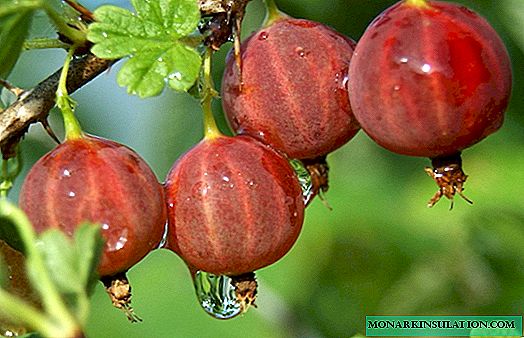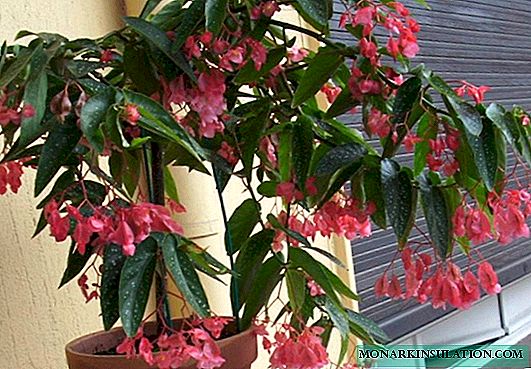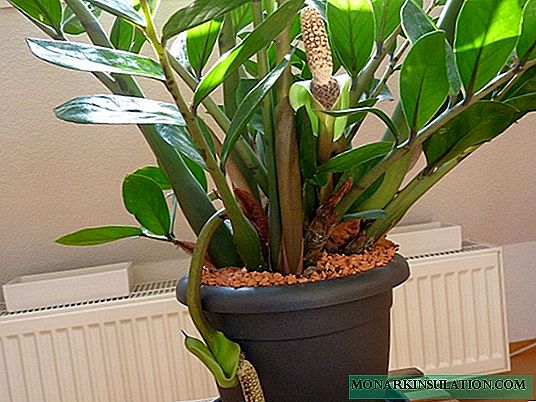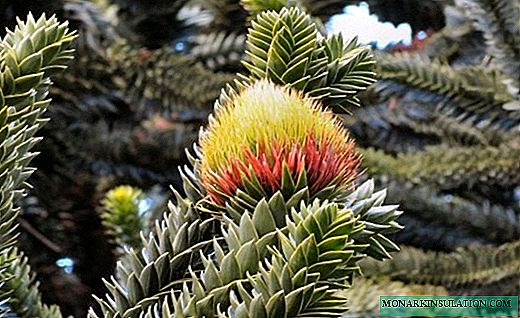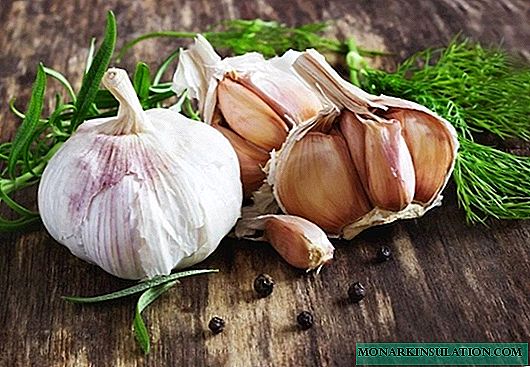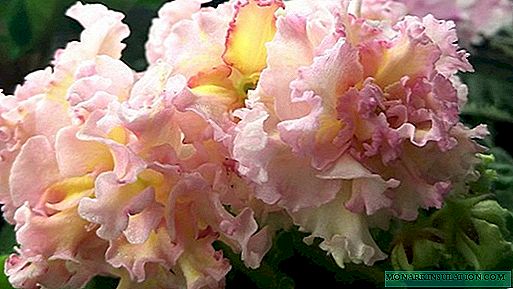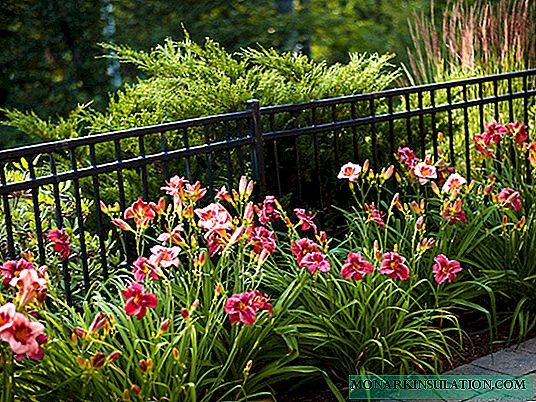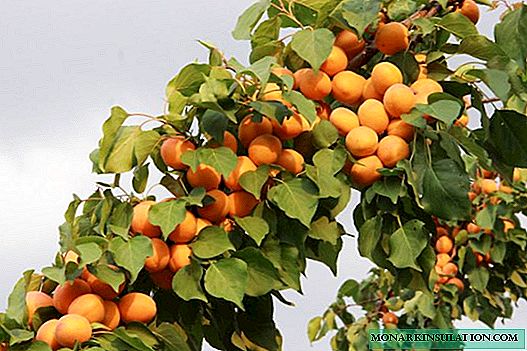Kandyk (erythronium in Latin, dog canine in Turkic) is a perennial bulbous plant of the Lileiny family. It grows in the mountainous regions of North America, Europe, Japan. In Russia, distributed in the Caucasus and southern Siberia. The plant was known in the 1st century BC.
There are 29 species, some of them are grown in gardens as ornamental plants. Three rare ones are listed in the Red Book of Russia.
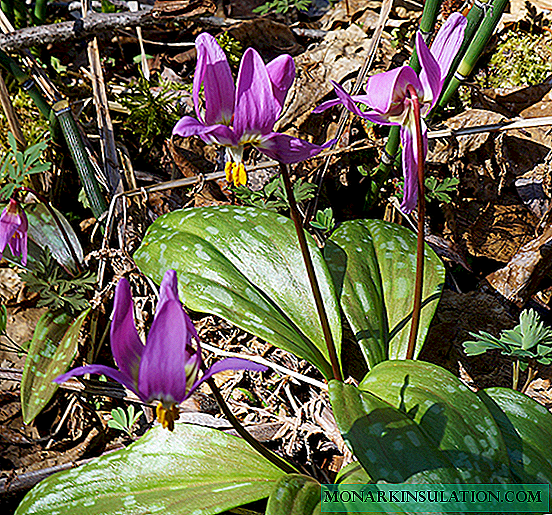
Kandyka description
It is small in height, 10-30 cm, less often, under the most favorable conditions - 60 cm. The bulb is elongated, cylindrical or ovoid. At the base of the peduncle are two long elongated leaves located on each other, which makes the plant even more elegant and emphasizes the beauty of the flowers.
The flower, as a rule, is single, large with six long petals collected in a bell hanging down. The edges of the petals bend gracefully upward. It resembles a common indoor flower cyclamen or a small lily.
Flowering begins in April-May and lasts 2-3 weeks. Moreover, each flower opens very quickly, literally before our eyes and blooms for 8 days. After the fruit is formed in the form of a box with several seeds. But the terrestrial period of life in erythronium is short, the green parts of the plant dry out and die off in the second half of summer.
The plant is a honey plant and gave the name to a very rare early variety of honey. Kandyk honey is collected by bees in Altai and Siberia. In liquid form, it is dark in color, but crystallizes very quickly and at the same time brightens to a shade of baked milk. It has unusual taste and healing properties.
For medical purposes, erythronium tubers are also used. They treat epilepsy, impotence, pulmonary diseases.
In gardening, kandyk is grown in individual glades or on alpine hills in combination with other primroses. It was increasingly used for distillation along with tulips and hyacinths. Flowers do not fade for a long time in a cut, therefore they are used for spring floristic compositions.

Types and varieties of erythronium
| View | Description | Leaves Flowers | Varieties |
| European | Prefers to grow in shrubs and deciduous forests of the mountainous regions of Europe. It is found in the Alps and in western Ukraine. The stem is light pink, 10-30 cm high. | Wide, narrowed to the bottom, green with purple spots. Petals are pointed, strongly bent up. Pink, purple, with a white core. |
|
| Siberian | It is found in southern Siberia and Mangolia. The bulb in shape resembles a predator's fang. Height is from 12 to 35 cm. It tolerates frosts up to -50 ° C. | In the shape of an ellipse, with pointed ends. Green, marble, with red-brown veins. 8 cm in diameter, whitish, pinkish, lilac with a yellow core. |
|
| Tuolumni | It grows exclusively in Sierra Nevada. 30-40 cm high. | On petiole, plain green, up to 30 cm. On the peduncle several pieces of golden color with a greenish base. |
|
| California | Grows in forested areas of California. | Oblong, with a rounded end. Spotted, 10 cm long. One or more per plant. White-cream with an orange mouth. |
|
| Japanese | Distributed in the Kuril Islands, Sakhalin, Japan, Korea. It does not tolerate heat. | Narrow, up to 12 cm long. One, drooping, pale purple. | It doesn’t. Rare, listed in the Red Book. |
| Caucasian | Hailing from the mountains of Western Transcaucasia. Bulbs are cylindrical. Stem 25 cm long. Sensitive to frost. | Ovoid, bluish, spotty. White, sometimes yellowish. The middle is red-orange. |
|
| American | Growing wild in the mountains of the USA and Canada | Oblong, with brown spots. Length 20 cm, width 5 cm. Bright yellow. Peduncle 30 cm. |
|

Erythronium planting in open ground
Erythronium refers to early flowering plants. It is cultivated in shaded places, on the north side of the garden, under the crowns of trees and shrubs that protect it from the sun.
Landing is carried out in the last days of summer. As a rule, planting material hibernates safely, and in spring, crops sprout.
Soil is needed raw, peat, loose and sour slightly above normal. An equal volume of humus, river sand and sheet land is suitable.
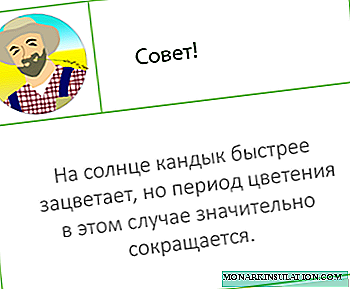
2 weeks before planting, you need to fertilize the site. To do this, take 1 m2:
- 200 g of bone meal;
- 150 g of superphosphate;
- 100 g of crushed chalk;
- 30 g of saltpeter.
Kandyk is propagated by seeds and children. When the box ripens, if you miss the moment, the seed will fall to the ground. Therefore, in order to collect them without loss, it is recommended to cut off the slightly unripe boxes and dry them on the decks in a dry, ventilated room.
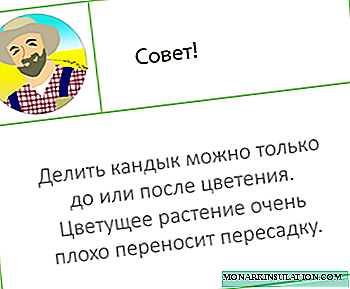
Soil is pre-treated from ants so that they do not drag the seeds.
For crops, furrows are made at a distance of 10 cm from each other with a depth of 3 cm. Seeds are laid every 5 cm, fall asleep and watered abundantly.  Propagation of kandyka seeds
Propagation of kandyka seeds
In the spring shoots should appear. Plants planted in this way will bloom in 4-5 years. Kandyk belongs to primroses and is one of the most beautiful snowdrops.
In the first spring, the height of the shoot should be at least 4 cm. Otherwise, top dressing and enhanced irrigation are needed. By autumn bulbs are formed with a diameter of 4 cm. In the second year, they increase in size to 7 cm. For the third season, the bulb takes the form of a cylinder, grows up to 8 cm in diameter and goes deeper into the soil - by 7-10 cm.
You can plant seeds in the spring. But at the same time, to accelerate germination, you must first create an artificial wintering. To do this, they are placed in a plastic bag with wet peat and placed in the refrigerator for 2-3 months.
Erythronium children are planted in the soil to a depth of 10-15 cm, American varieties deeper - by 16-20 cm, covered with a layer of mulch and also watered abundantly. With this method of propagation, plants bloom the following year. 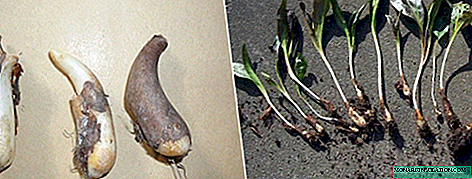 Kandyka breeding by kids
Kandyka breeding by kids
You can grow seedlings at home in boxes under the film. Seeds are sown at a distance of 2-3 cm from each other. After emergence, the film is removed.
When the sprouts are strong, they are taken out for a short time to the street for hardening. After the earth thaws and warms up, seedlings are planted in a permanent place.
Kandyk Care in the Garden
Caring for plants is practically not required. Watering is very rare. If the soil is mulched, weeding and loosening are not required.
In the first year, seedlings of kandyk are not fed, since before planting, preparation and top dressing of the soil has already been carried out. In subsequent years, conventional mineral fertilizers are applied for flowering garden bulbous plants.

After 4-5 years of flowering, kandyka bushes grow in the underground part, and they need to be planted. This should be done after the plant fades and rests a little - in July-August.
Determine that the bush is ready for transplantation by yellowed and faded leaves. The bushes are dug up, the children are carefully separated from the main bulb. The breaking points are sprinkled with crushed charcoal.
New bulbs need to be planted immediately, as they quickly dry out and can stay in the air for no more than a day, if planting is planned after a while, or if the seed material needs to be transported, the children are stored in containers with wet sand, peat or moss. As such, young bulbs can spend 20 days.
Erythronium in winter
The plant is winter hardy. It winters well in open ground. Only if winter is expected to be cold and without snow, crops are covered with fir branches or dry foliage.
Such a shelter will well retain moisture in the spring, so it is removed only after the snow has completely melted.
Diseases and pests
Kandyk is practically not susceptible to disease. Damage to him can be caused by insects and rodents living in the ground: bears, moles, shrews.
Fighting these pests is quite laborious. To avoid the use of poisons and do without big expenses, you can apply affordable and humane folk methods of protection.
Clutches of the bear will be destroyed if the soil between the plants is loosened 10-15 cm in depth. If possible, a plastic bottle cut from both sides in the form of a cylinder is instilled around each bush. So insects will not get to the bulbs.
Moles and shrews are scared away with the help of improvised devices. It is necessary to take iron rods 1-1.5 m long, stick them into the ground at the places where rodents are concentrated at half length.
Put an empty tin can of beer or Coca-Cola on top of the free end. The bank will strum from the wind, the vibration will be transmitted along the iron rod and scare away the animals.
Rag tows soaked in dust are also laid directly in burrows. This smell is very disliked by moles and shrews. They will be forced to leave the site.
So that pests do not destroy all the plants at once, it is better to plant them in several places of the garden that are far from each other.

